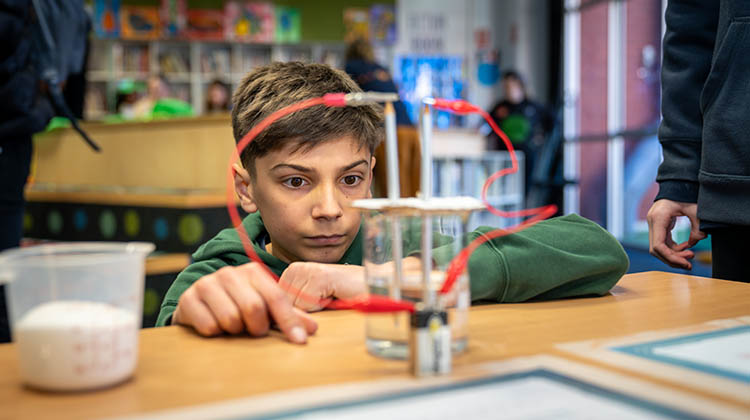Tech Can’t Replace Teachers

Technology and education seem to be inseparable right now, but the importance of teachers isn’t diminishing.
According to at least one expert, the ability to excite students about a topic is uniquely human and very hard for technology to replicate.
Stile Co-Founder and CEO, Daniel Pikler, an early mover in edtech around science resources, thinks the skill and relatability of a human instructor is very difficult to emulate and edtech will always be an adjunct and support to flesh and blood teachers.
“I believe technology will continue to empower teaching and learning in the classroom by engaging and motivating students. Teachers have a unique and vital role to play in student education so I don’t think there’s any possibility of technology replacing them.
“Instead, technology will continue to develop, and in the process continue to improve as a tool for teachers to use in the classroom to support and engage students in their learning,” Pikler says.
For a resource to work, a balance between presenting exciting content and students actually absorbing the information presented needs to be struck.
“To achieve this balance, we invest considerable time and energy in creating high quality instructional materials.
“Resources are designed to get students interested, wanting to learn and feeling empowered to delve deeper into topics of interest. Our resources are designed to challenge them to find their zone of proximal development, deepen their knowledge and build their skills.
“We work very closely with practising teachers to ensure our materials are received well by students."
The trick seems to be creating content that is topical, specific and of high quality.
“Over the last decade, schools have come to appreciate the necessity of having subject specific learning tools.
“For example, in science, students are required to learn scientific terminology they wouldn’t ordinarily come across. They are also required to complete hands on experiments, gather data, and produce test questions against that data. There's a wide range of unique skills that a student requires to excel in science. Therefore, it’s no surprise that a student will benefit from materials which are specialised in this area,” Pikler says.
Between writers, teachers, engineers, artists, and videographers, Stile invests approximately 50 hours in preparing a one-hour classroom lesson.
“Part of this process is to look closely at the requirements of the curriculum, consider what students are interested in, what is required to teach a topic well, and what is a relatable phenomenon that students are going to find inherently interesting. We consider what data is available to present, unpack and analyse a topic, and how we can create content and videos that are engaging.
“We reflect on what media is needed, and how we can scaffold student learning on a topic so students who know nothing about a subject come to understand everything they need to know. We consider how we can make a topic understandable for students of all learning abilities and test our resources in classrooms with practising teachers,” he says.
Pikler feels that while there needs to be a focus on quality resources, what ‘quality resources’ should look like needs to be formalised.
“In the education sector at large, I’d like to see the creation of an independent body responsible for publishing reviews on high quality instructional materials. A body of this sort could make independent recommendations to decision makers around education materials and therefore have a positive effect on student outcomes. This would work to save decisionmakers' time and ensure students receive a high-quality education,” he says.
There must be teachers available to deliver lessons and finding and keeping STEM teaching talent continues to be an issue, money is part of the solution as is ongoing teacher support.
“To attract and retain STEM teaching talent, we need to set teachers up for success and encourage them to fall in love with the incredibly rewarding profession of teaching. To do that we need to make sure the expectations of teachers are appropriate and that they’re not overworked. For example, we can’t expect educators to teach by day, and then write curriculum, report, and complete administrative tasks by night. Instead, we need to focus on providing teachers with the tools they need to save time and to be highly successful in a rewarding career.
“It also comes down to ensuring teachers are paid well. Singapore is an example of a country where teachers are paid well and as a result the country benefits from wonderful teacher retention and student outcomes,” he says.
The latest resources from Stile are about hydrogen, which is a hot topic given our transition away from fossil fuels and towards greener, sustainable energy.
“We’re committed to keeping our curriculum resources up to date with the latest in science, and hydrogen is going to be a critically important fuel in the future.
“From fuelling space exploration to powering cars with hydrogen fuel cells, hydrogen production will play a major role in dramatically curbing the effects of climate change. It will also be key in helping Australia reach its target for zero emissions by 2050. The switch to hydrogen will happen in today’s students’ lifetimes.”